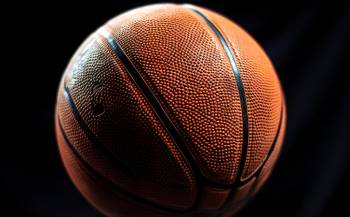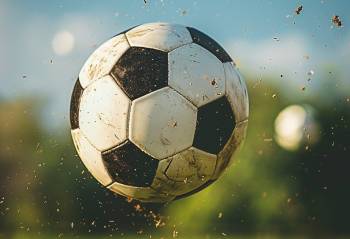When it comes to recreational activities, the thrill of the moment often overshadows the potential risks involved. Yet, the reality is that not all leisure pursuits are created equal, especially when considering the likelihood of injury. In this comprehensive blog post, the J&Y Law Firm, a respected personal injury firm based in Los Angeles, CA, delves into the world of recreational activities to uncover which ones are the most hazardous to your health and well-being.
As advocates for victims of personal injuries across California, we at J&Y Law Firm are intimately familiar with the repercussions that a moment of fun gone wrong can have on an individual’s life. From mounting medical bills to the long-term impact on quality of life, the consequences of recreational injuries can be profound. It’s our mission not only to protect our clients but also to inform and educate the public on how to enjoy their favorite activities safely.
In this article, we’ve compiled data, insights, and years of legal experience to highlight the recreational activities that statistically lead to the most injuries. Our goal is to shed light on these risks, offer practical advice on how to minimize them, and ensure that your leisure time remains both enjoyable and safe. Whether you’re an adrenaline junkie or someone who prefers a more laid-back approach to recreation, this guide is an essential read for anyone looking to navigate the balance between fun and safety.
Let’s talk Sports

Basketball: The High Injury Rate Sport
Despite common beliefs, basketball holds the title for the sport with the highest injury rate. This might come as a surprise to many, but the essence of basketball — with its swift movements, abrupt directional changes, and frequent leaps — significantly raises the likelihood of accidents and falls. This, in turn, leads to a higher rate of injuries. The sport’s wide-ranging appeal means individuals of all ages are at risk of injuries.
Typical Injuries in Basketball Include:
- Knee Injuries: Often a result of the continuous strain from running, jumping, and sudden directional shifts.
- Ankle Sprains: These injuries are common due to the rapid side movements, stops, and jumps.
- ACL Injuries: Occur from swift directional changes, awkward landings from jumps, or collisions with other players.
- Dislocated Fingers: Caused by the strong impact of the ball or clashes with opponents, leading to unnatural bending of the fingers.
- Wrist and Hand Injuries: Frequent during falls or attempts to break falls with hands.
- Back Injuries: Stem from repetitive motions, including running and jumping.
- Muscle Strains: The hamstrings are particularly susceptible due to the constant sprinting and abrupt stops.
- Head Injuries: Concussions and other head injuries can happen during collisions or falls.
Football: A Physically Demanding Sport with High Injury Potential

Football is recognized for its intense physicality, which includes high-speed collisions and dynamic play that can lead to various injuries.
Common Injuries in Football:
- Concussions: Can occur from tackles or player collisions.
- Sprains and Strains: Due to quick movements and changes in direction.
- Fractures: From impacts or falls.
- Dislocations: Particularly in fingers or shoulders from forced movements.
- ACL Injuries: Stem from sudden stops or changes in direction.
- Shoulder Injuries: Such as rotator cuff injuries or separations from tackles and falls.
- Knee Injuries: From tackles, sudden stops, and repetitive knee stress.
Soccer: A Global Passion with Serious Injury Risks

Soccer, a beloved sport worldwide, showcases the intense and painful nature of sports injuries, despite occasional exaggerations by players.
Common Injuries in Soccer:
- Ankle Sprains: Due to direction changes and collisions.
- Groin Injuries: From rapid lateral movements and sudden direction changes.
- Shin Splints: Caused by overuse and repetitive running.
- Knee Injuries and ACL Tears: From twisting movements, abrupt stops, and collisions.
Rugby: The Unprotected Battlefield
Rugby’s reputation for danger is well-earned, with intense physical engagement and minimal protective gear.
Typical Rugby Injuries:
- Concussions and Head Injuries: From tackles and collisions.
- Shoulder Dislocations: Due to forceful tackles.
- ACL Injuries: From sudden directional changes or excessive stress on knees during tackles.
- Fractures: Especially in the collarbone, ribs, and limbs, from high-impact collisions.
- Lacerations: Common from contact with gear or other players, due to the lack of protective clothing.
- Knee Injuries: A result of the sport’s physical demands, including running and contact.
The Serious and Expensive Nature of Jet Ski Injuries

Contrary to the assumption that accidents on small personal watercraft are minor, the reality is starkly different. Jet skis, capable of reaching high speeds, pose a risk of severe injuries, comparable to those experienced in automotive accidents.
Injuries from such incidents can be both grave and financially burdensome, necessitating lengthy and costly medical treatments, including possible years of physical rehabilitation. Victims may seek compensation for these expenses and other damages, with legal assistance facilitating this process.
Common Injuries from Jet Ski Accidents Include:
- Whiplash: Achieving speeds up to 70 mph, jet ski riders, without the security of a seatbelt, face significant risk. Sharp turns or sudden stops can easily eject a rider, leading to neck injuries like whiplash. Without prompt medical intervention, this can evolve into chronic conditions.
- Pelvic Injuries: Documented cases in the Journal of Forensic Sciences highlight the potential for critical pelvic injuries from jet ski accidents, attributed to the forceful water jet. Instances have involved severe trauma necessitating emergency medical attention and surgery.
- Spinal Cord Injuries: Being thrown from a jet ski can cause spinal cord damage, affecting the spine and adjacent areas. Treatment often involves surgery, therapy, and ongoing medication.
- Deep Bruises: The minimal protective gear worn by jet skiers leaves them highly susceptible to deep bruising upon impact with another object or their own watercraft.
- Lacerations: The high velocities at which jet skis operate and the exposed skin of the riders increase the risk of cuts and tears. These injuries can lead to infections and other complications if not properly treated, and may result in lasting scars.
- Fractures: Research published in Orthopedic Traumatology Surgery & Research notes that a significant number of watercraft injury cases involve severe fractures requiring surgical intervention.
- Traumatic Brain Injury: Falling off a jet ski can lead to head injuries, including concussions, especially since helmets are not commonly worn. This lack of head protection significantly increases the risk of brain injury.
These injuries underline the importance of recognizing the potential dangers associated with jet skiing and the critical need for appropriate safety measures and gear.
Navigating Safety in Skydiving: A Comprehensive Guide

Embarking on a skydiving adventure floods the senses with adrenaline and excitement. Yet, the essence of this thrill lies not just in the leap but in a thorough understanding and preparedness for potential injuries. This guide doesn’t aim to deter but to empower enthusiasts with insights for a thrilling yet safe dive from the skies.
Minor Injuries: Understanding and Care
- Cuts, Bruises, Lacerations, and Contusions: Commonly occurring from interactions with the ground or equipment upon landing. While minor, diligent cleaning is crucial to ward off infections and promote quick healing.
Sprains: Addressing Ankles and Wrists
- Frequent in skydiving, sprains arise from ligaments being overstretched or torn, often due to landing missteps or sudden jerks. Employing the RICE method immediately can significantly aid in reducing swelling and encouraging recovery.
Fractures: Alert and Action
- Poor landing technique or unexpected impacts can lead to fractures. Emphasizing proper training and technique can mitigate this risk. Prompt first aid and medical attention are vital in such instances.
Dislocations: The Shoulder Scenario
- The dynamic nature of skydiving can lead to shoulder dislocations from hard impacts. Quick and proper medical care is necessary for effective healing, possibly supplemented by rehabilitation exercises.
Cuts and Abrasions: Preventive Care
- Direct contact with equipment or natural terrain can cause these injuries. Maintaining cleanliness and protection of wounds is essential for swift healing.
Bruises and Contusions: Minor yet Important
- Resulting mainly from landing impacts, while generally minor, it’s important to monitor these injuries for any complications, applying ice or heat as necessary.
Muscle Strains: Avoidance and Management
- Strains may occur from improper movement or excessive exertion. Warm-up and stretching are preventive measures, while the RICE method and medical consultation are recommended for treatment.
Whiplash: A Sudden Concern
- The forceful movement of the neck, especially during parachute deployment or landing, can lead to whiplash, necessitating rest, pain management, and possibly exercises under medical advice.
Concussions: The Impactful Reality
- Resulting from head impacts, concussions demand immediate medical evaluation and treatment, emphasizing the importance of protective gear.
Spinal Injuries: A Rare Risk
- While uncommon, the potential for spinal injuries exists, especially during landings, highlighting the importance of emergency treatment and preventive measures.
Fatalities: Understanding the Extreme Rarity
- Despite being exceedingly rare, fatalities underscore the critical need for stringent adherence to safety measures, equipment maintenance, and comprehensive training.
Injury Treatment in Skydiving Sports
- For minor injuries: Clean thoroughly to avoid infection.
- Sprains: Implement the RICE protocol promptly.
- Fractures: Immediate medical intervention is essential.
- Dislocations: Medical attention is crucial for correct treatment and recovery.
- Cuts/Abrasions: Clean and protect wounds to hasten healing.
- Bruises/Contusions: Monitor and manage with ice or heat.
- Muscle strains/Whiplash: Apply RICE and seek medical advice; whiplash may also require specific exercises.
Call a California Personal Injury Lawyer
As we’ve navigated through the world of recreational activities, highlighting those with higher risks of injuries, it’s important to remember that while seeking thrills and engaging in physical activities are essential for a fulfilling life, safety should always be a priority. Injuries, unfortunately, can be a part of these experiences, but understanding how they occur and how to prevent them can help keep you safe as you pursue your adventures.
Should you find yourself dealing with the aftermath of an injury sustained during one of these recreational pursuits, know that you’re not alone. The J&Y Law Firm specializes in helping individuals like you navigate the complexities of injury claims, ensuring that you receive the support and compensation you deserve to aid in your recovery.
Don’t let an injury diminish your quality of life or financial stability. If you’ve been injured, reach out to the experts at J&Y Law Firm for guidance and representation. Contact us today at (323) 202-2305 to discuss your situation and explore your options. Remember, taking the right steps after an injury is crucial, and we’re here to help you through every phase of your recovery and legal process.


